Blanching is a process recommended as a pre-treatment before freezing most vegetables. Without blanching, many veggies lose some of their natural color, taste, and texture after freezing. Blanching counteracts changes by neutralizing the enzymes that cause these changes. In short, blanching helps in retaining the quality of the vegetable after freezing. Blanching is by no means necessary, but it gives you better end results.
Blanching consists of three stages: pre-heating the water, blanching, and cooling. First, we bring the water that we will use for blanching to a boil. Then we put the vegetables in the boiling water or steam for a short time. Finally, we cool them rapidly to stop the cooking process. For vegetables, the most common and fastest method of blanching is by putting the vegetables being blanched in boiling water, so we will focus on that in this guide.
However, feel free to steam the veggies instead. Just make sure you’re steaming them for long enough, about 2-3 times longer than you would keep if you are blanching the vegetables.
Please note that blanching makes sense only if you were to freeze the veggies raw. If you want to cook or bake the veggies before freezing, there’s no point in blanching.
How to Blanch Vegetables Before Freezing
- Prepare the veggies so they are ready to be used right away after thawing.
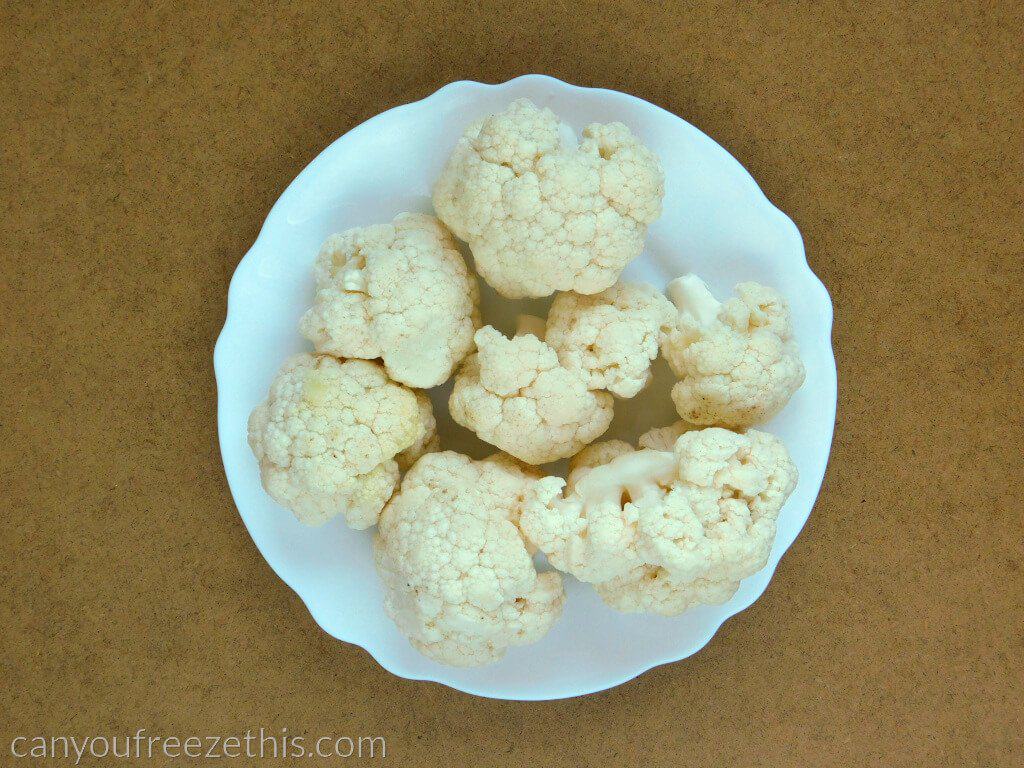
Prepared veggies - Put a pot of water on the oven.
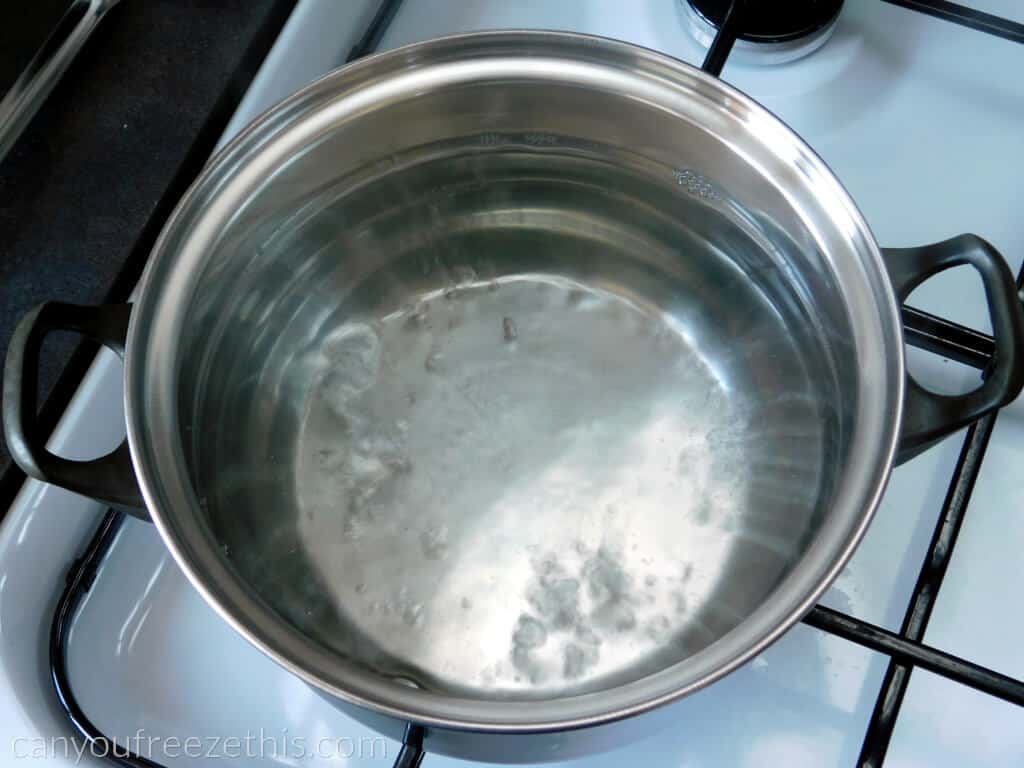
Pot of boiling water - While the water is heating, prepare an ice bath for the veggies. Get a large pot of cold water and throw in some ice cubes if you have some on hand. If you blanch only a handful of veggies, feel free to skip the ice cubes.
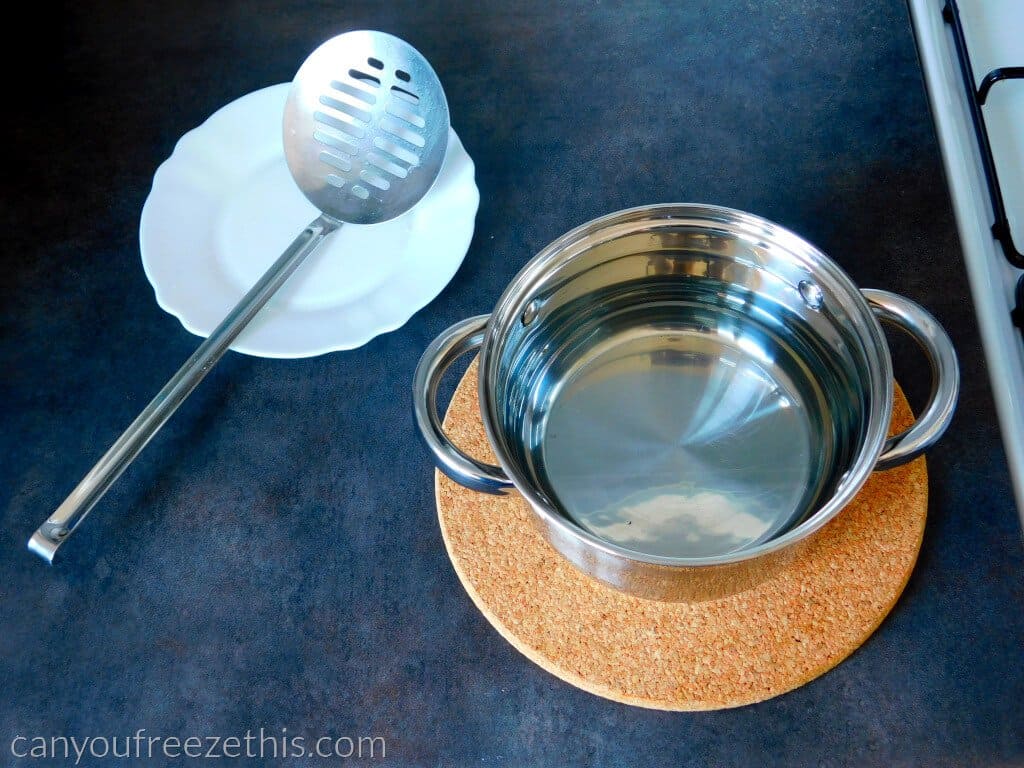
Cold water for cooling down - Once the water in the pot is boiling, throw the prepared veggies into the pot. Put the lid on and wait until the water comes back to a boil.
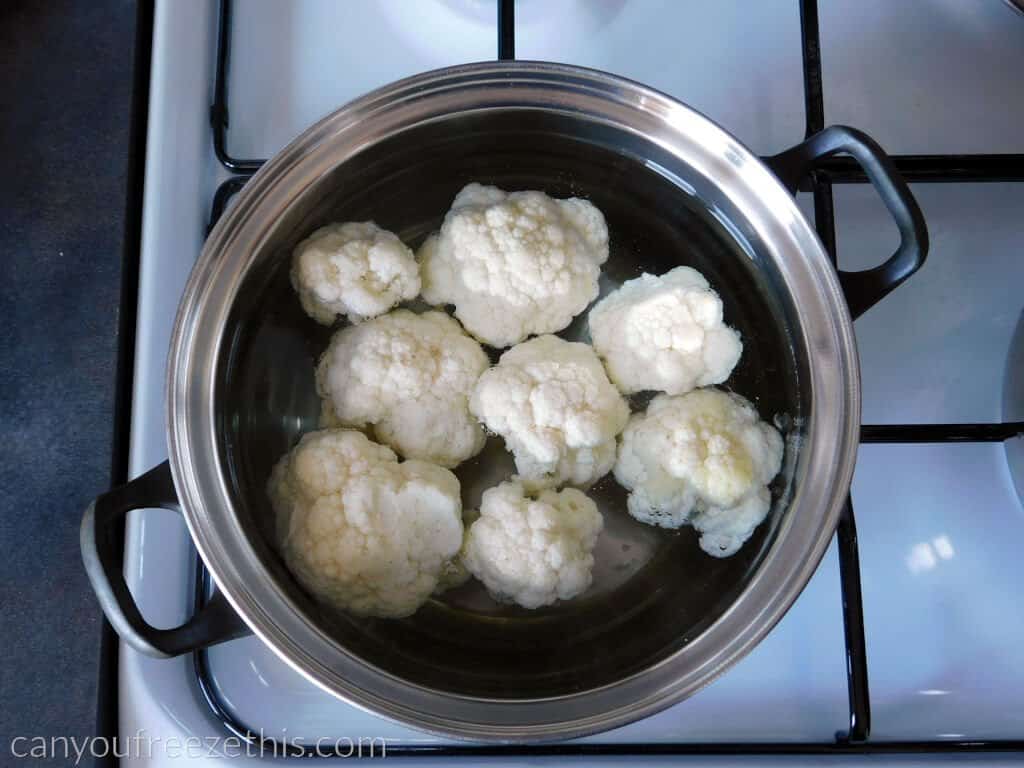
Bringing cauliflower back to a boil - Once the water is boiling again, start a timer and keep the veggies in the boiling water for the given time. The time the veggies should be kept in the boiling water depends on the type of vegetable you are blanching, the cut, size, and texture. It will usually fall between a minute for leafy greens and up to even 8-10 minutes for a whole corn on the cob.
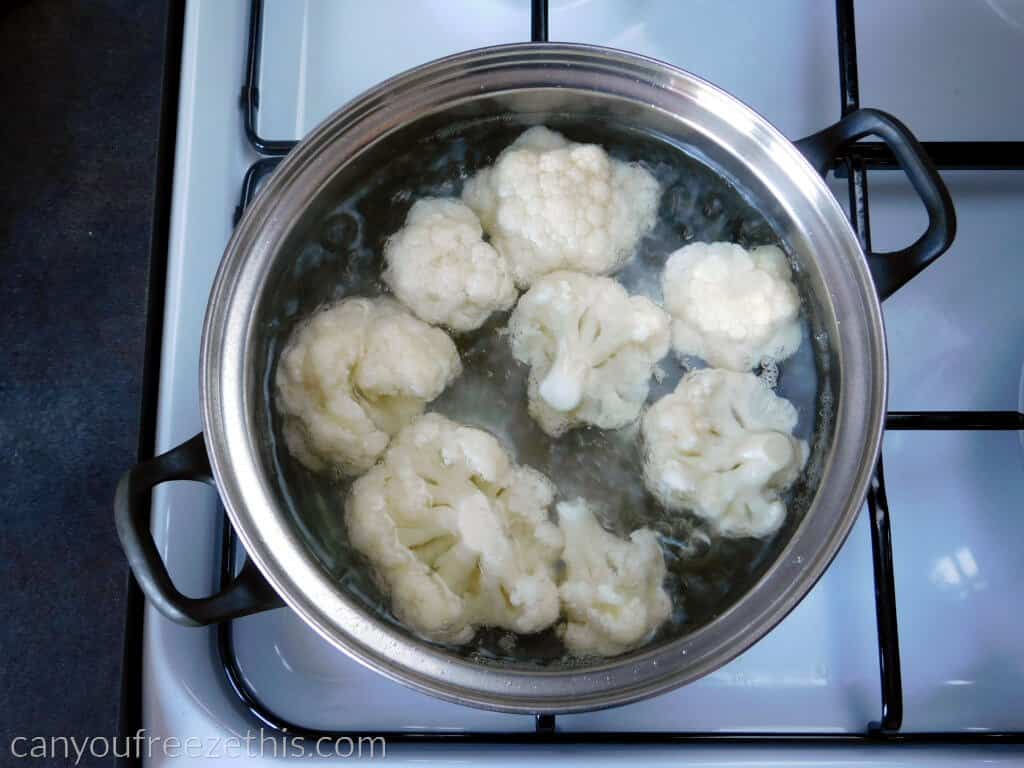
Water is boiling again - Once that time passes, immediately transfer the veggies into the ice bath.
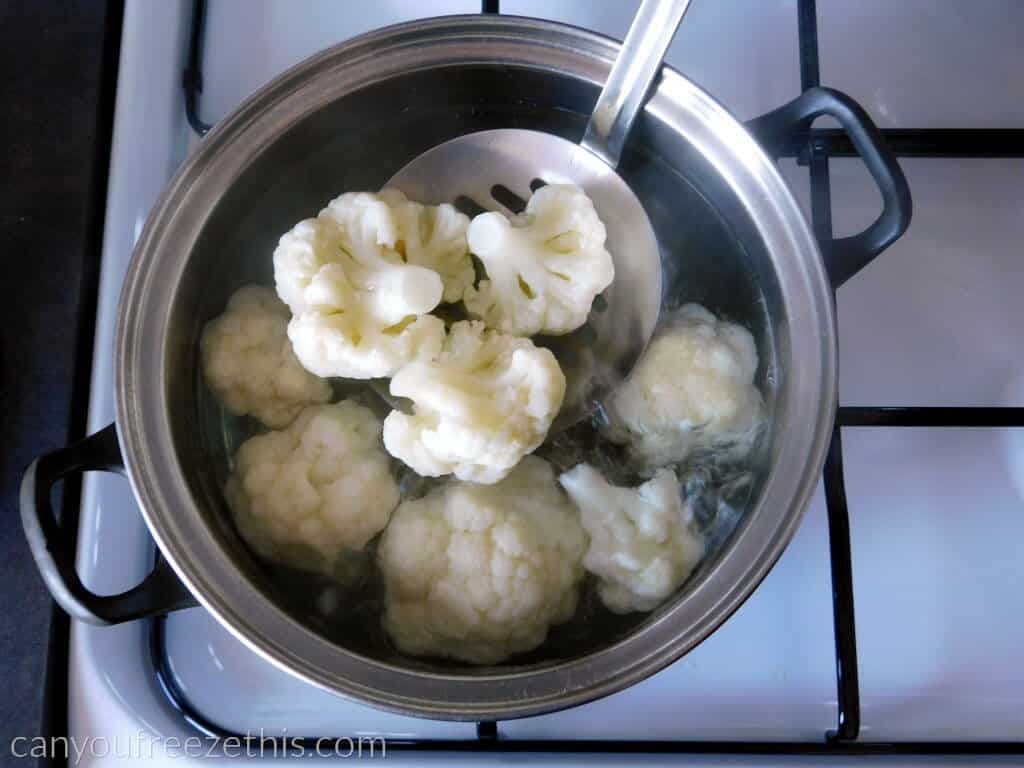
Scooping blanched vegetables - Leave the veggies in the cold water for at least 5 minutes.
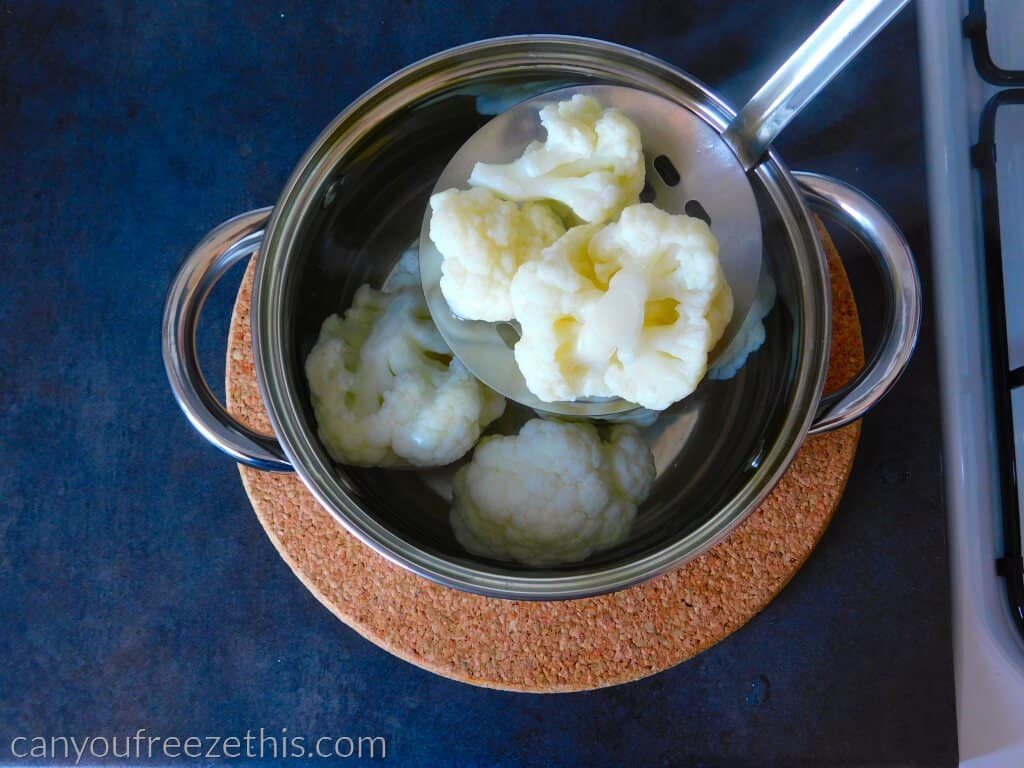
Transferring blanched veggies into cold water - Pat the veggies dry thoroughly. While drying is technically not a part of blanching, the vegetables have to be completely dry before freezing. I usually shake off as much water from the veggies as I can. Then, I would assemble the blanched vegetables onto a dishcloth, and leave the veggies to dry for 30 minutes. Before proceeding further, I use paper towels to get rid of any remaining wet spots.
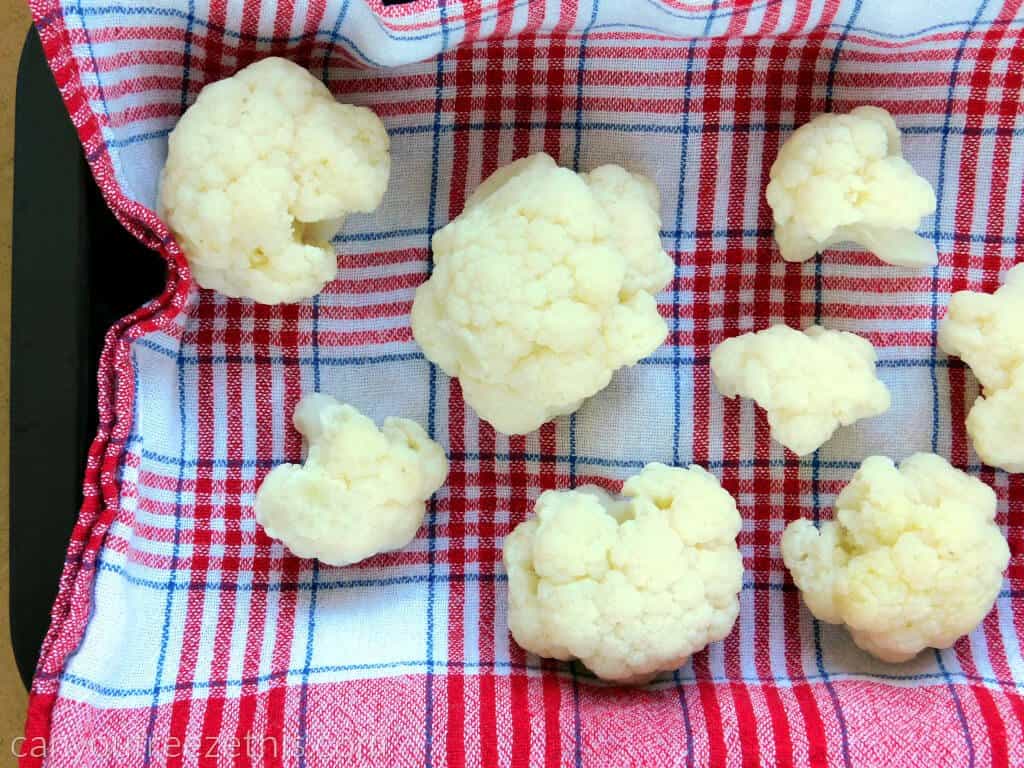
Drying veggies
Tips and Tricks for Blanching
- You can use a sink for the ice bath instead of a large pot.
- If you have a large batch of veggies to blanch, there’s no need to throw all of them into the boiling water at once. You can do this in batches. Just remember to bring the water to a boil each time, and pour in some cold water to the ice bath and add some ice cubes every batch or two. In short, make sure the ice bath stays cold.
Are There Any Drawbacks of Blanching?
Of course, blanching has its drawbacks. The first one is that it takes time and is an additional step in the process. While the technique is by no means difficult, it can take anywhere between 15 to 30 minutes to blanch a small batch of veggies. The best way to help mitigate that is to either do it while cooking other food or blanching a big batch.
Another drawback is that some of the nutrients are being lost in the process. Veggies leach water-soluble nutrients when being boiled. The temperature destroys some of the heat-sensitive ones too. But when you think about it, we do freeze vegetables to be cooked later. The process of cooking and re-heating the vegetables would happen either way so the net loss of nutrients is rather small.
Read more about blanching: